At Home and Behind the Scenes

After their historic 1991 interview for Fortune at Steve’s home, Bill Gates and Jobs paused to get their photograph taken with Brent Schlender in the backyard. Bitter competitors at times who publicly sneered at each other repeatedly, Gates and Jobs eventually came around to a mutual respect. © George Lange
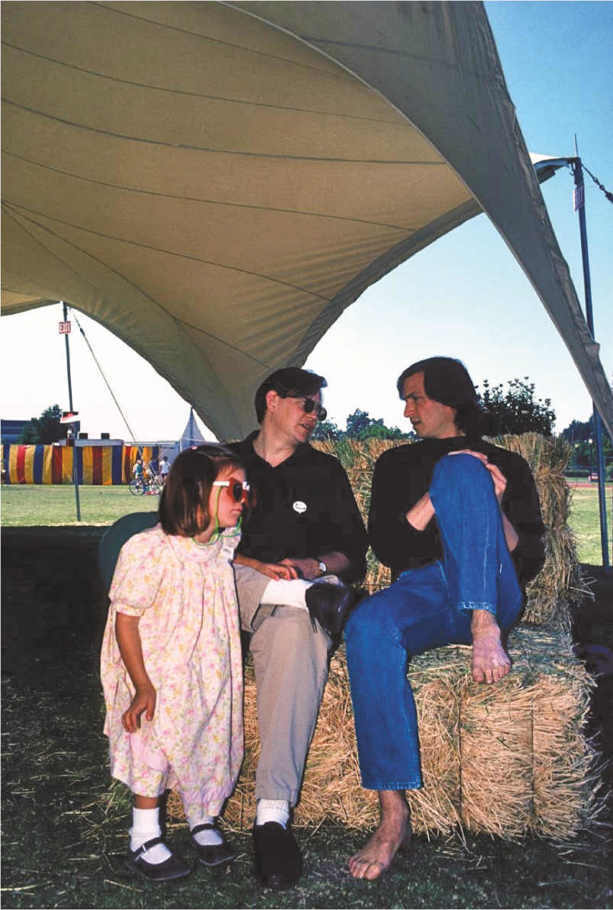
At NeXT, Jobs hosted annual picnics for the staff. Schlender attended one in 1987 with his daughter, Greta. © Ed Kashi/VII
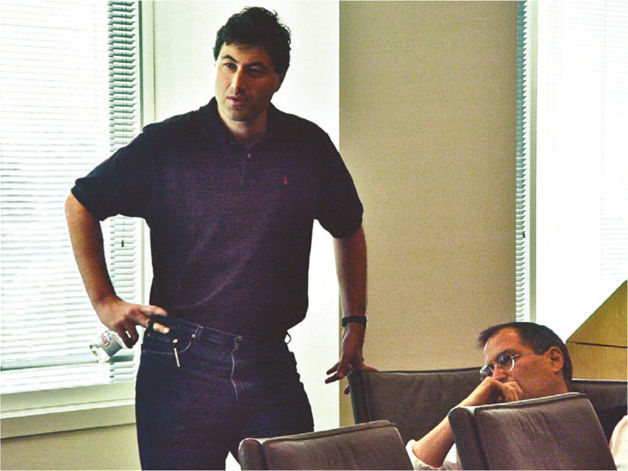
In the late 1990s and early 2000s, Steve relied on software chief Avie Tevanian as much as anyone. While Apple’s hardware won most of the kudos, its software—especially Tevanian’s masterpiece, OSX—laid the foundation for recovery. Courtesy of Brent Schlender
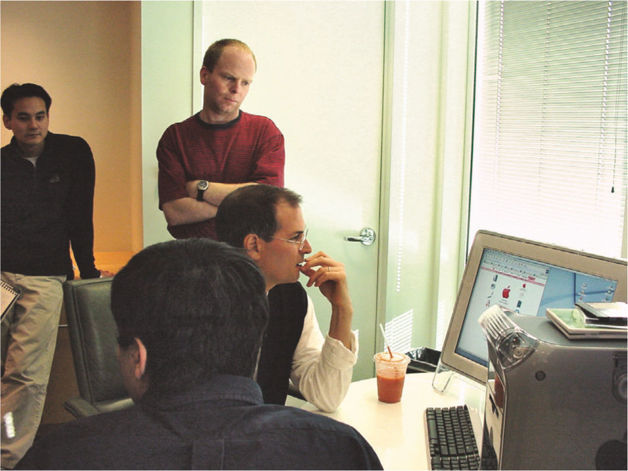
User interface designers watch as Steve reviews the details of OSX in 2001, shortly before its release in beta form. Later during this session, Steve would exclaim, “It looks good enough to lick!” and then lean forward and actually lick the screen. Courtesy of Brent Schlender

Pixar employees called their new headquarters in Emeryville “Steve’s movie,” because he invested so much time in its creation. Here he leads Schlender on a private tour of the grounds in 2000, shortly before it opened. He took pride in the “random” pattern of the bricks on the wall ahead of him, which had been meticulously arranged to appear random. Courtesy of Brent Schlender
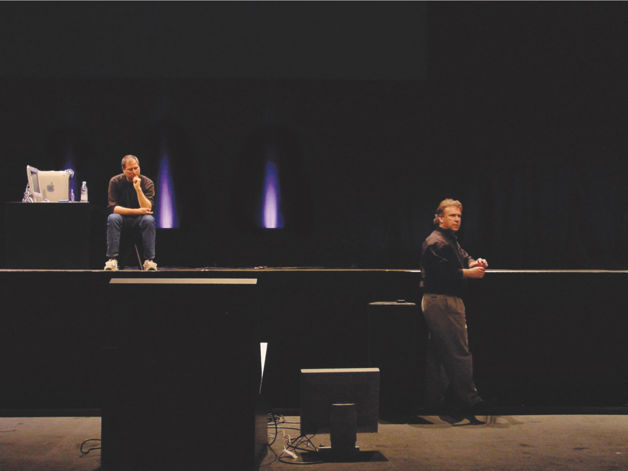
Rehearsals for product presentations were always intense. Here, the day before a MacWorld Tokyo affair in February 2001, Jobs festers while he and marketing chief Phil Schiller wait for a technical problem to be solved. Courtesy of Brent Schlender
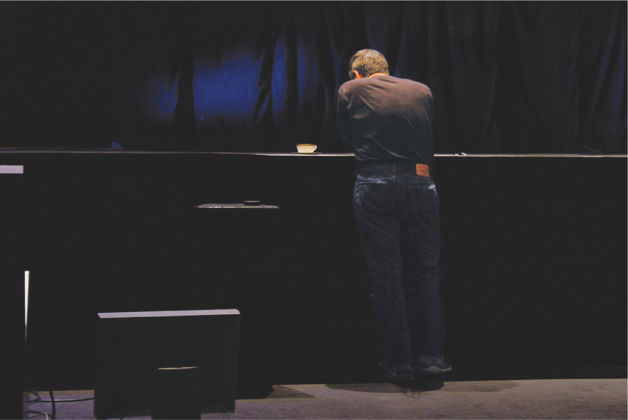
Jobs, alone, reviewing his script the day before MacWorld Tokyo in 2001. Courtesy of Brent Schlender

At the MacWorld Tokyo keynote on February 22, 2001, he reiterated the “digital hub” strategy that he had laid out a few days earlier back in California. This was the beginning of the broadly defined Apple experience, which would eventually lead to Apple becoming the most valuable company in the world. Courtesy of Brent Schlender

The October 23, 2001, introduction of the iPod was a smallish affair, befitting Apple’s limited initial expectations for the product. Here Steve shows it off to an audience made up of press and Apple employees, at Apple’s Town Hall on its Cupertino campus. Courtesy of Brent Schlender
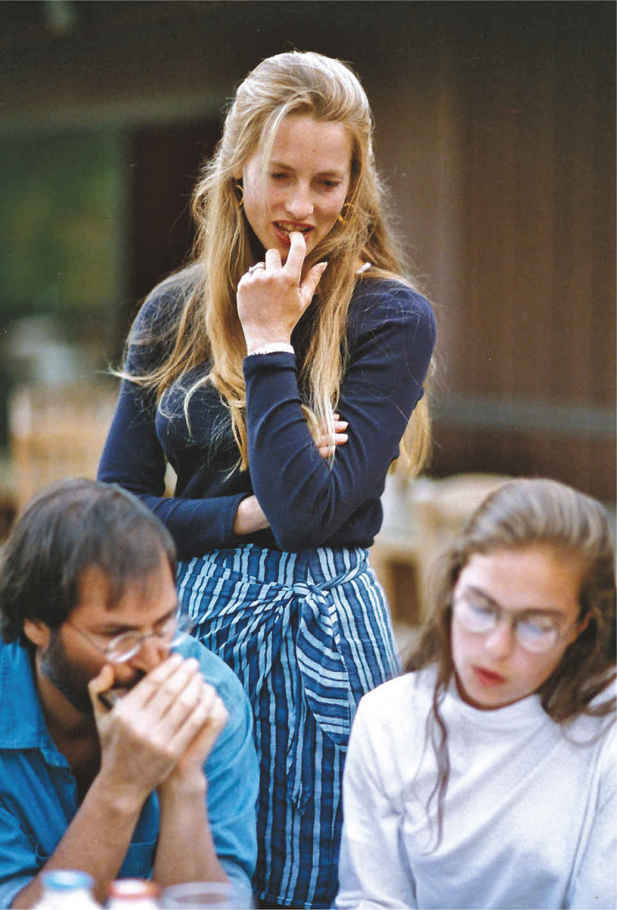
Steve worked hard to repair his relationship with Lisa. She was his daughter from an earlier relationship, and at first he had denied his paternity. Here, in 1994, he plays the harmonica for her while Laurene looks on.
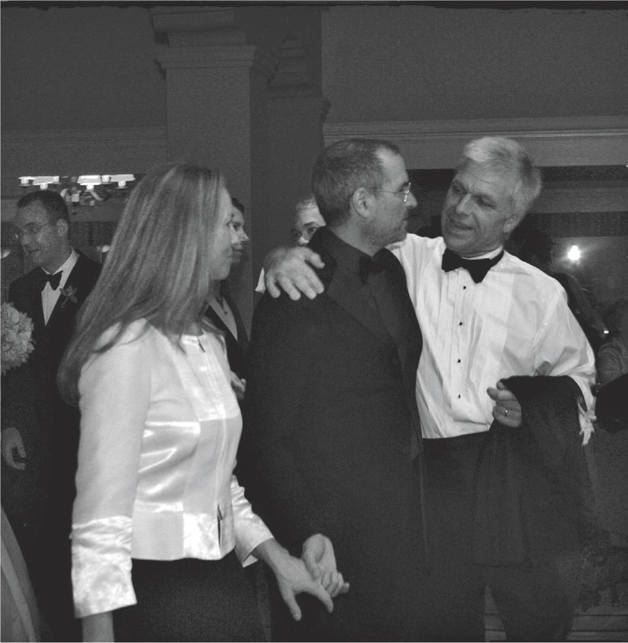
Steve and Laurene attended the wedding of Mike Slade in 2001. Slade, who worked for both Bill Gates and Jobs, believes that he may be the only person to have attended the weddings of both computer industry titans. Courtesy of Mike Slade
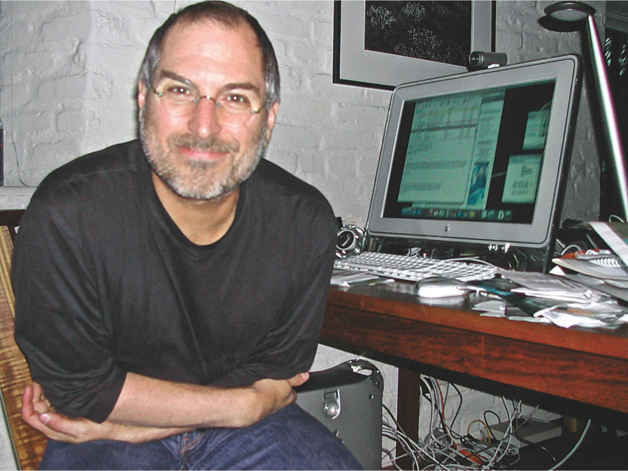
Steve in his home office in Palo Alto in 2003.

Steve and his family took vacations together at least twice a year, often going to Hawaii or to Europe. In 2005, they went to Mexico, and here they emerge from a sweat lodge together. That’s Evie in front, with Erin, Laurene, Reed, and Steve behind her.
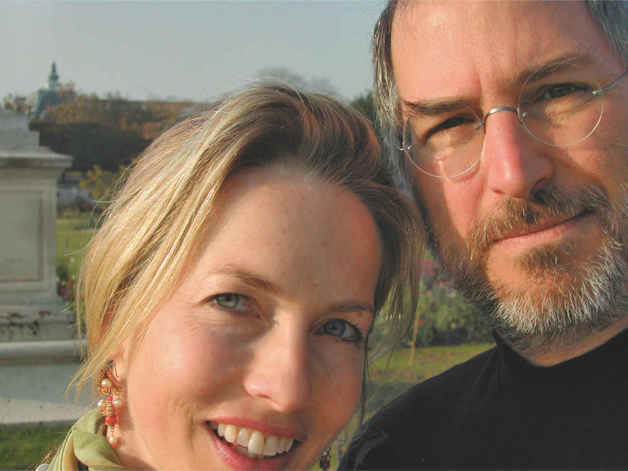
What looks like a Steve Jobs “selfie” with Laurene, taken in Paris during a vacation in 2003.
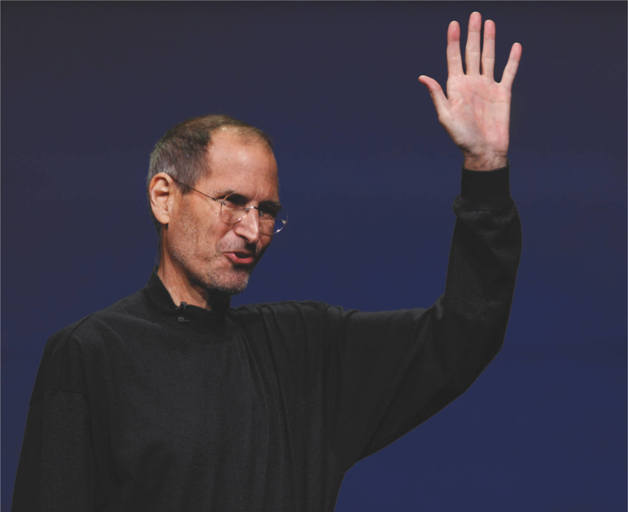
Jobs waves to the crowd assembled for the introduction of the iPad2. It was to be his last Apple product presentation, on March 2, 2011. He died seven months later. © Paul Chinn/San Francisco Chronicle/Corbis
Chapter 11
Do Your Level Best
The world was opening up to Apple bit by bit, and vice versa. The iPod was Apple’s first mass-market consumer device, but it had come about because Steve and his team had taken one logical step after another: first iMovie, then a correction leading to iTunes, then the iPod. Steve’s patience, discipline, and vision had set Apple on a new course, one that was more complicated than its old path, which had simply involved the regular improvement of personal computers. Apple would now follow its explorations to their logical conclusion, even if this led the company into the heart of other industries. If Apple could successfully maneuver in the world of music, it might, under Steve’s leadership, be able to do so in other kinds of business as well. The grand scheme—bringing computing tools to people who could employ them creatively to enhance their lives and work—remained the same. But the breadth of Apple’s horizon had stretched.
As a mass-market consumer electronics device, the iPod would eventually be sold, of course, all the usual places: Best Buy, Circuit City, big-box department stores, and even the computer retailers like CompUSA. Steve disdained all these outlets. His obsession with his products continued well after they’d been manufactured. The tacky, low-margin hustle of these chains ran completely against the minimalist aesthetic of his products and the clean exuberance of his marketing. There was only one place where he really enjoyed seeing his products sold to the public: his own Apple stores, which had debuted four months ahead of the iPod.
Going back as far as the debut of the Mac, Steve had always groused about the way Apple computers were sold in its resellers’ stores. The way his computers were displayed and sold represented the very worst of what could go wrong when things weren’t done his way. The salespeople, always interested in quick turnover, seemed to make little effort to understand what was special about a Mac, and had less incentive to do so after IBM and its clones became dominant. Even at NeXT, Steve had talked to Susan Barnes about creating a different kind of computer store, one in which his high-end productions could be shown off to discerning customers.
In early 1998, just a few months after his return to Apple, he asked his chief information officer, Niall O’Connor, to come up with a proposal for an online store where Apple could sell its computers directly to customers, much like Dell Computer was doing then with such great success. O’Connor asked Eddy Cue, who was then an IT technician in the human resources division, to sketch out an initial version of what the store might look like from a programmer’s perspective. “I don’t think Niall thought I was his best person,” says Cue, “but he did think I could deal with Steve, for some reason.” Cue, who had never met Steve and knew little about e-commerce or retailing, sought advice from a number of people, including head of sales Mitch Mandich. “Give him your best ideas,” Mandich told him, “but it won’t matter because we’ll never do it. It would piss off the channels [the stores and distributors that had traditionally sold Apple’s computers].” One week later, Cue, O’Connor, Mandich, and others attended a meeting to review the initial proposal. Cue handed his presentation to Steve—he’d made it visual, because everyone had told him that Steve preferred visual presentations, and he’d put it on paper, because everyone had told him Steve hated sitting through slides, especially in small meetings. All the research seemed to have gone for naught. Steve looked at his pages, handed them back, and said, “These suck.”